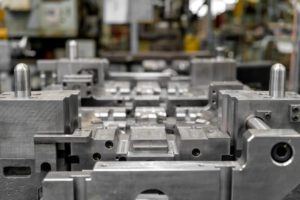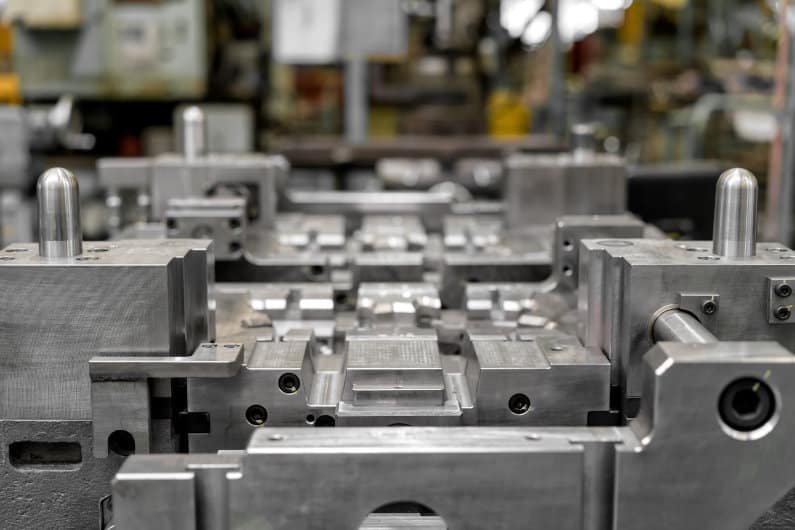Die casting is a process for creating metal parts that are highly complex. The process consists of forcing the molten metal under high pressure into a mold cavity. The molds are made of hardened tool steel and resemble injection molds. These molds are made to produce a particular type of metal part.
The process of cold forging metal begins with preparing the metal workpiece by applying a lubricant. The lubricant will prevent the metal from sticking to the die and will also keep it cool during the forging process. Forging temperatures can range from 250o to 450o. While lubricants are not generally necessary, it’s a good idea to add them before the process begins. Once lubricants are added, the metal coil will be fed into the forging machine. The metal is then passed over the die, which is either a single piece or two. The upper part of the die will contain a hammer that strikes the metal.
In addition to producing single castings, die casting also produces multi-casts. In addition, dies may contain several cavities to create several different types of parts. These parts can then be joined to make a unit die. The die-casting process first came into use in the printing industry in the mid-19th century, but it has evolved into a critical manufacturing process. The process can produce parts with intricate features and a great surface finish.
The process is relatively inexpensive compared to metal forging and is more cost-effective for large-scale production. The process produces components with excellent mechanical properties, a high degree of consistency, and tight tolerances. It is also capable of producing complex shapes and intricate forms. Furthermore, die-cast parts can be heat-treated. Because of its efficiency, die-casting is an excellent choice for sheet metal fabrication projects. However, it’s not a low-cost process to start, and it is prone to environmental conditions. It’s best to outsource the process if you’re not sure whether you’re up to the task.
Cold forging is similar to cold heading in that the bar stock is placed into a die, and the workpiece is squeezed by another closed die. This process is usually less expensive than hot forging, and it also produces smaller parts. Unlike hot forging, cold forging requires a lubricant, and the use of lubricants will extend the life of the tool.
Cold forging increases productivity by 100-200 times compared to hot forging. The process is more efficient, as the raw material is not wasted and can be utilized in its entirety.
One of the benefits of die casting is its ability to mass-produce parts with complex shapes. In addition to being cost-effective, this process also provides parts with excellent surface finishes. Because of its ability to produce complex shapes, this process can be used in many industries. It can also provide parts with tight tolerances and a high degree of strength.
A die is a permanent mold that is heated and filled with molten metal. The mold has a plunger at one end that remains down until the molten metal solidifies in the die. Then, the casting is released from the dies through an ejection system. The process can be performed in a hot or cold chamber.
A die can last for several thousand parts. The process takes a few seconds for a small component to more than two to three minutes for a larger part. This process is particularly useful when casting parts that require a complex shape with many different components. One drawback of die casting is that dies are expensive and often require frequent change.
Die casting is an excellent choice when parts need to be heat resistant or have high tensile strength. Since die casting does not require any after-production processing, die-cast parts are extremely strong and heat-resistant. Additionally, tolerances can be as close as.002″ for metals like aluminum and zinc. The type of metal used will depend on the application. For example, aluminum is ideal for automobile parts that require corrosion-resistant properties, while stainless steel is great for medical instruments.
In addition to being cost-effective, die casting is the most efficient way to mass-produce non-ferrous metal parts. This method allows manufacturers to produce parts with complex shapes with minimal machining and significantly reduces production time. Furthermore, die casting also provides EMI and RFI shielding. These properties make die-cast parts more durable than many other types of castings.
Despite its cost-effectiveness and precision, die-casting is a versatile process that is often used to produce parts in high volumes. The process involves several steps, including metal preparation, injection, and finishing. During this process, the metal is heated in a chamber. The metal then enters a “gooseneck” automatically. A hydraulically-powered vertical piston then forces the metal through the gooseneck.
